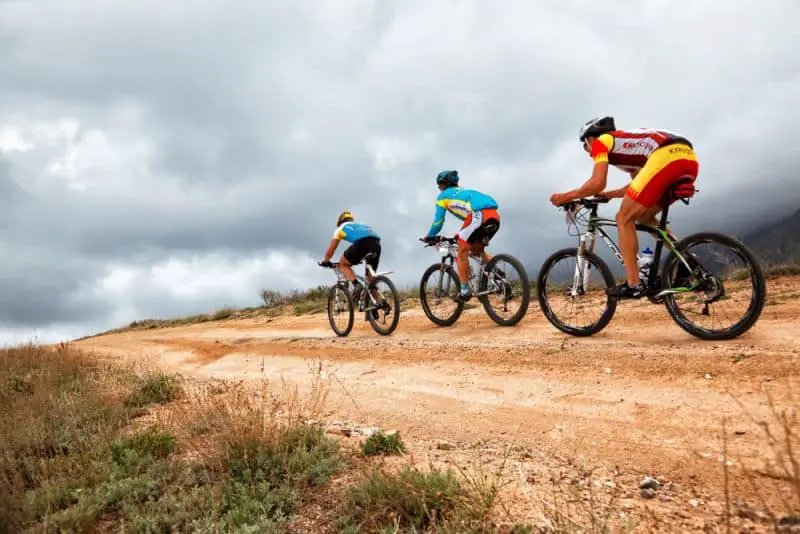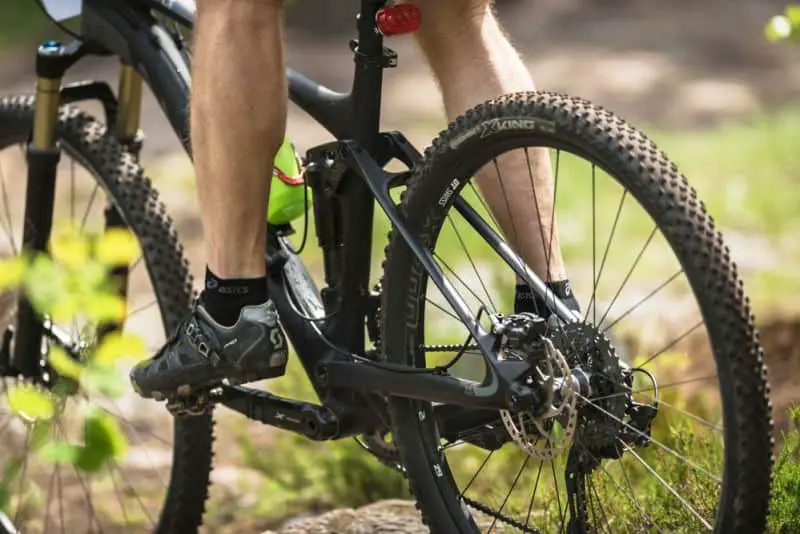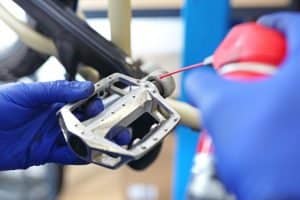Last Updated on January 28, 2022
Mountain biking depends heavily on your own skills and endurance.
Or more specifically speaking, it relies mostly on your pedaling efficiency.
This is because this is where the power to move the bike comes from. Without the pedaling motion, you can’t reach your destination.
And what better way to ensure the proper pedaling than by getting the right mountain bike pedals.
But does a bike pedal really do make that big of a difference in terms of the performance and level of riding you give out?
Well, it does. And that’s what we are going to further discuss in this article. We are also going to show you the many factors and reasons why different pedal types can affect your ride in one way or another.
Clipless vs Flat pedals
Clipless pedals and flat pedals are the two main types of pedals for mountain biking. Flat pedals are the more common kind because they come automatically on stock bikes.
They are also called platform pedals because you simply just have to place your foot on the pedal platform and you’re good to go.
These flat pedals also have pins that vary in length which keep your foot or shoes in place and stop it from moving when you’re riding on rough off-road trails. The shorter the pins, the less grip it provides on your shoes.
Meanwhile, longer pins provide the most grip, but they also come with some risks because the sharp and long pins can scrape the skin on your shin if you accidentally slide or crash off your bike.
On the other hand, clipless pedals have cleats that function as a clip that connects the pedals directly to the cleats found on your clipless pedal shoes.
This ensures that your feet are stuck on the pedals which lessens the chances of slipping or sliding off the platform.
But this requires a certain skill level because you need to clip your feet to the cleat by sliding it sideways. You then have to repeat this process by sliding it again sideways to unclip it and remove your foot from the clipless pedals.
Know your mountain biking discipline
Cross-country

Cross-country mountain biking is all about traveling long distances and being able to go as fast as possible on flat sections and climbs.
It doesn’t place too much emphasis on your skill level because you don’t usually ride on technical downhill trails. Instead, your endurance and cardiovascular strength are the main focus here, alongside your pedaling efficiency.
Hence, it’s best to use clipless pedals if you are into XC riding. These clipless pedals improve your pedaling efficiency because your feet don’t move out of place.
And you create a push and pull motion every time you pedal, instead of the only push motion you do with flat pedals.
Enduro
Enduro is another term for all-mountain riding. You need to be capable of climbing uphills but also know how to traverse technical steep sections when riding downhill trails. Aside from that, you also travel long distances.
However, enduro riders are more aggressive than the XC lads because they prefer shredding downhill trails to climbing.
With this, it then makes sense to still use clipless pedals. But make sure that these pedals have a platform so that your feet can still rest on a stable structure when you are on loose downhill trails.
Enduro-specific clipless pedals can be purchased in the market today. What’s great about these is that you don’t have to really clip in to remain your footing if you’re stuck in a tight spot because there is still a platform in place.
However, you can still use and ride flat pedals or hybrid bike pedals if you really want to be more flexible as you can adjust your foot positioning on the go without bothering to clip and unclip it.
Downhill
Downhill riding is the most extreme discipline because this covers big jumps, drops, and technical sections on loose and steep downhill trails.
Hence, it is best if you use a flat pedal or flat platform pedal for this one so you can easily dab your feet away from the mountain bike pedal if you lose balance.
Dabbing is the act of getting your foot out of the platform pedals and using it to regain balance by touching the ground using your foot.
However, there is a growing number of downhill riders who prefer clipless bike pedals over a flat pedal or platform pedals for downhill racing because these help them keep up with their footing when they go through very rough sections.
Is it safe to use clipless pedals for downhill?

Yes, it is. But make sure that you already know how to ride with a clipless pedal before you even try going full throttle on downhills with it.
Clipless pedals are a bit tricky for downhill riding because you can’t easily detach your foot from the pedals if you stumble on a slippery rock and you need to regain balance with a dab.
Nonetheless, you don’t have to worry about this if you are already experienced with clipless pedals on mountain bikes or even a road bike. It is best if you first master how to use clipless pedals on flat roads and do pedal stroke around your neighborhood before you go out on the real thing.
Why do racers use clipless pedals?
Racers use clipless mountain bike pedals because they can greatly affect the pedaling efficiency. And pedaling efficiency is a very big factor in your speed because you go faster with the help of the push and pull pedaling motion on clipless variants.
You are also less likely to get easily exhausted because you don’t exert much effort, which is just what you need to do as fast as possible.
Are flat pedals efficient?
Yes, they are as long as you maintain the right foot position. Make sure that the upper portion of your foot is the one that makes contact with the pedals and not your mid or lower portion.
You should also maintain a slightly bent pedal position where your toes are at the top and the heel at the bottom to improve balance and maneuverability.
Conclusion
Mountain bike pedals make a huge difference in your riding experience because it affects your performance, speed, and most importantly safety.
Weigh things out and choose the right kind of pedals, whether it be flat or clipless. Either way, each type has its own pros and cons, so you just have to assess your skills and the kind of mountain biking you do.

